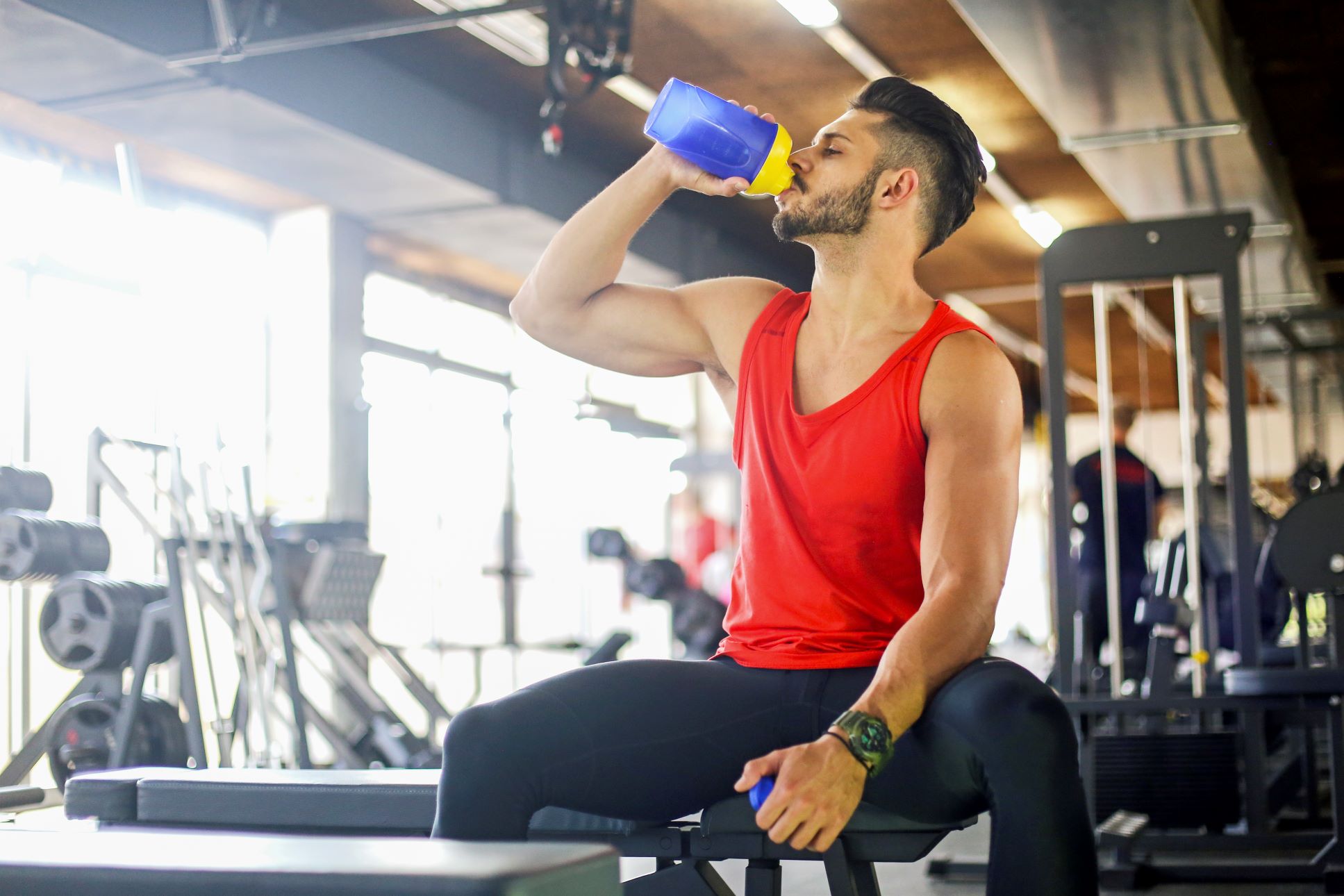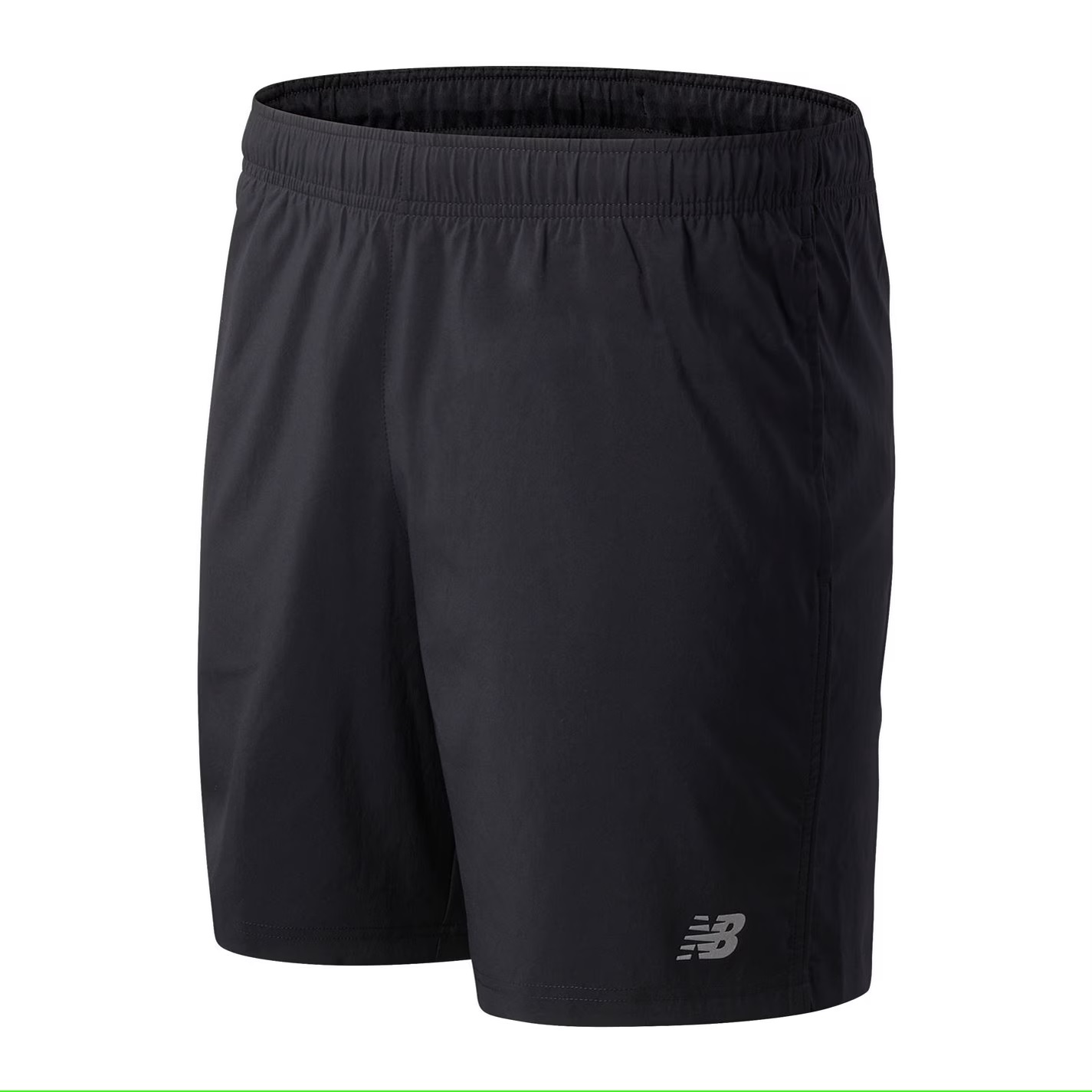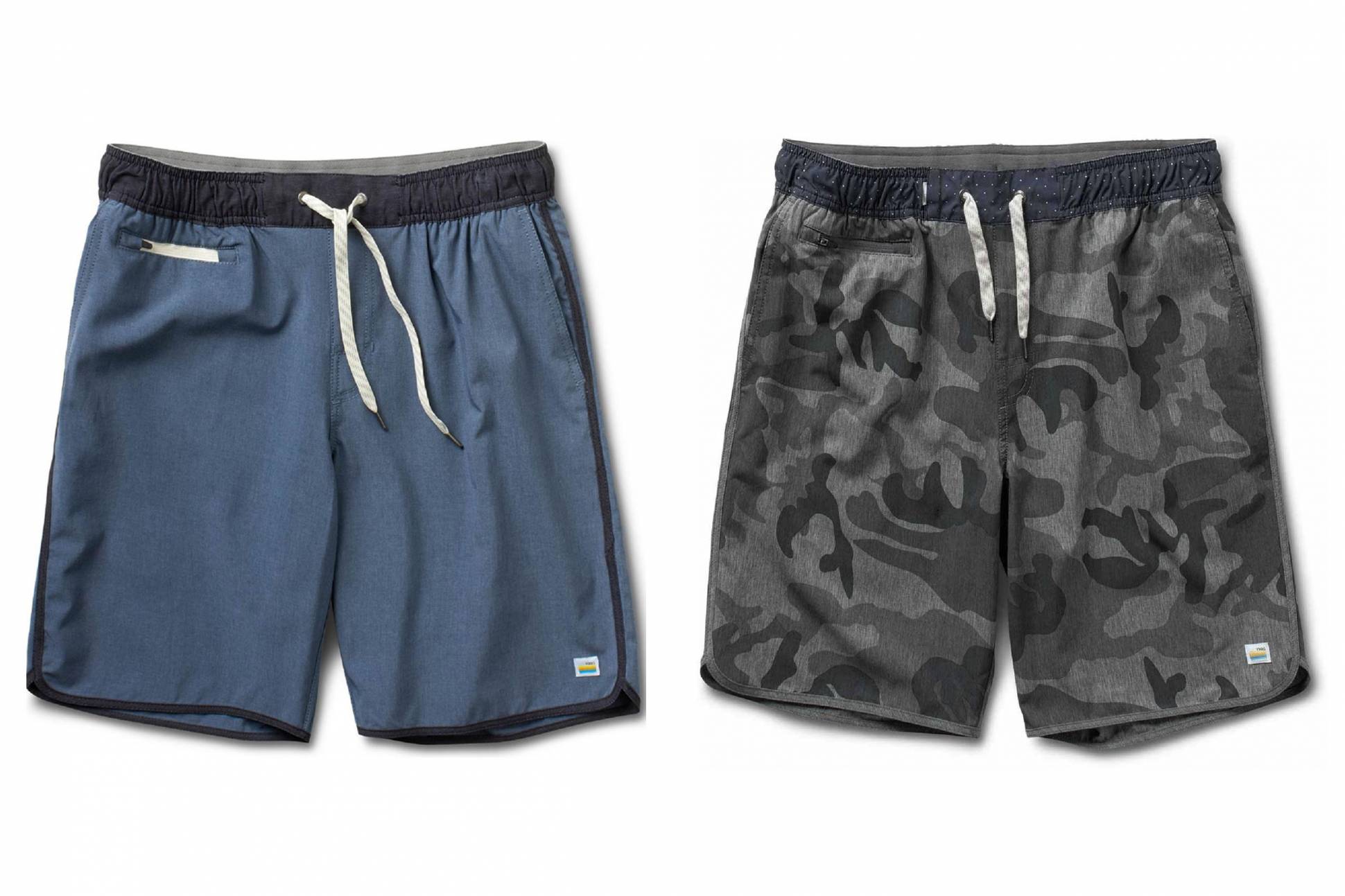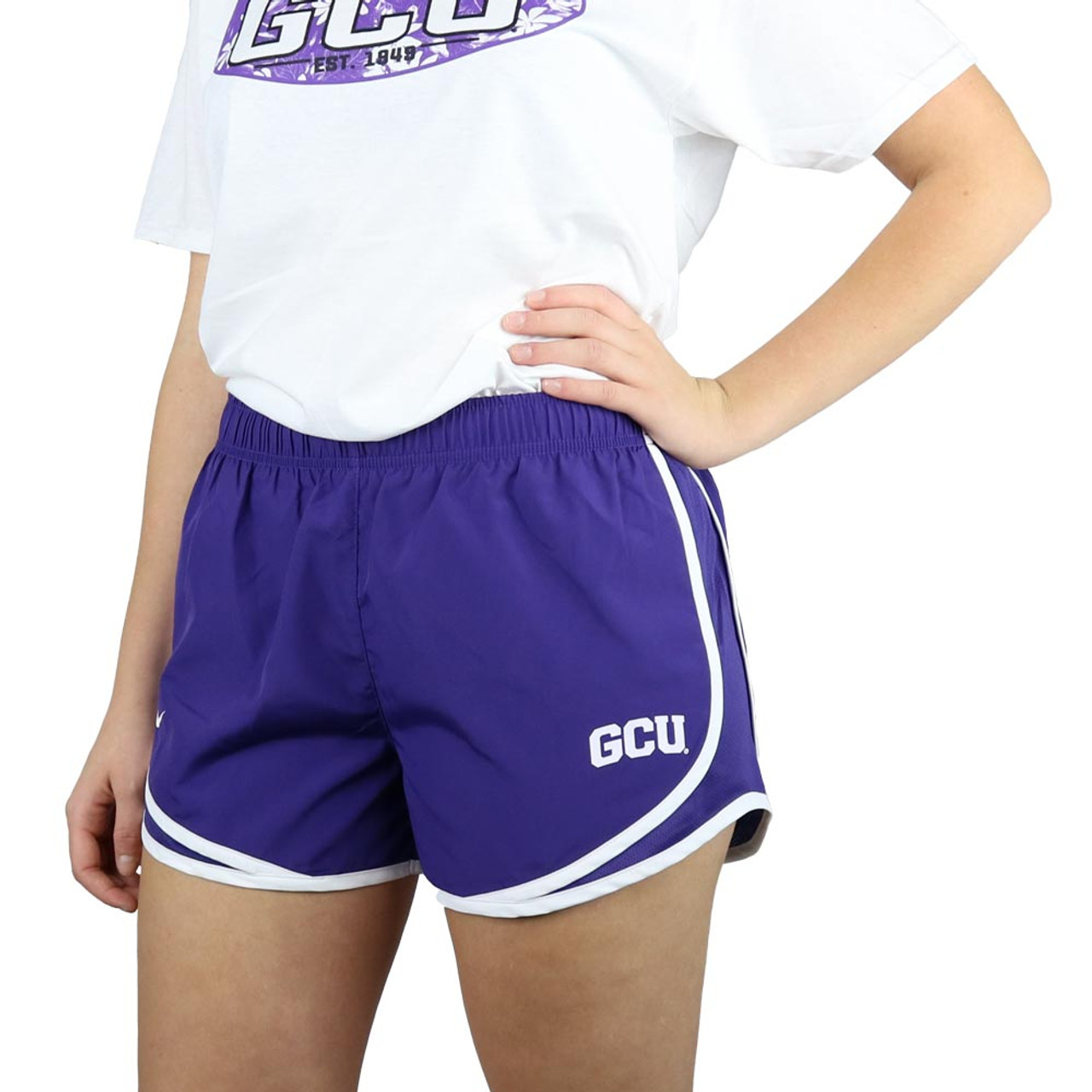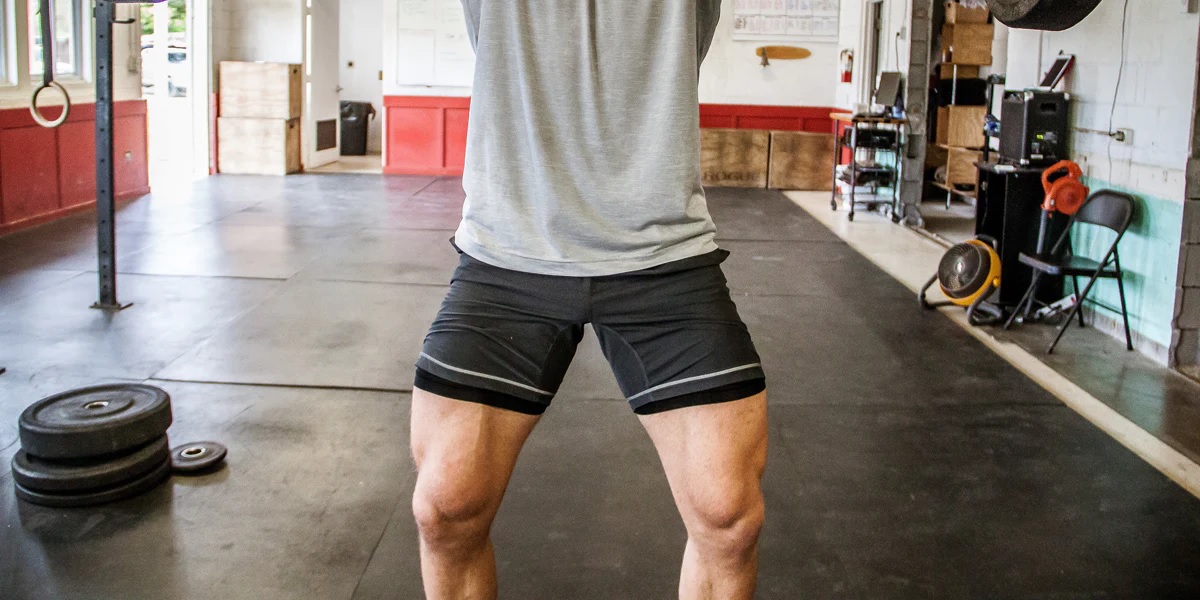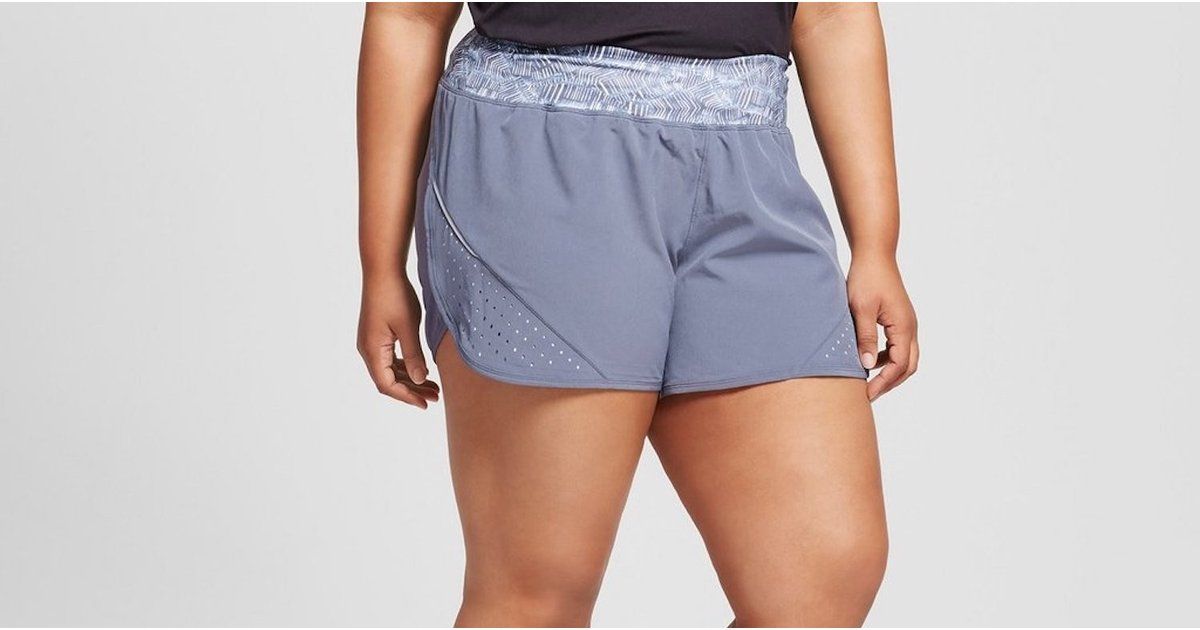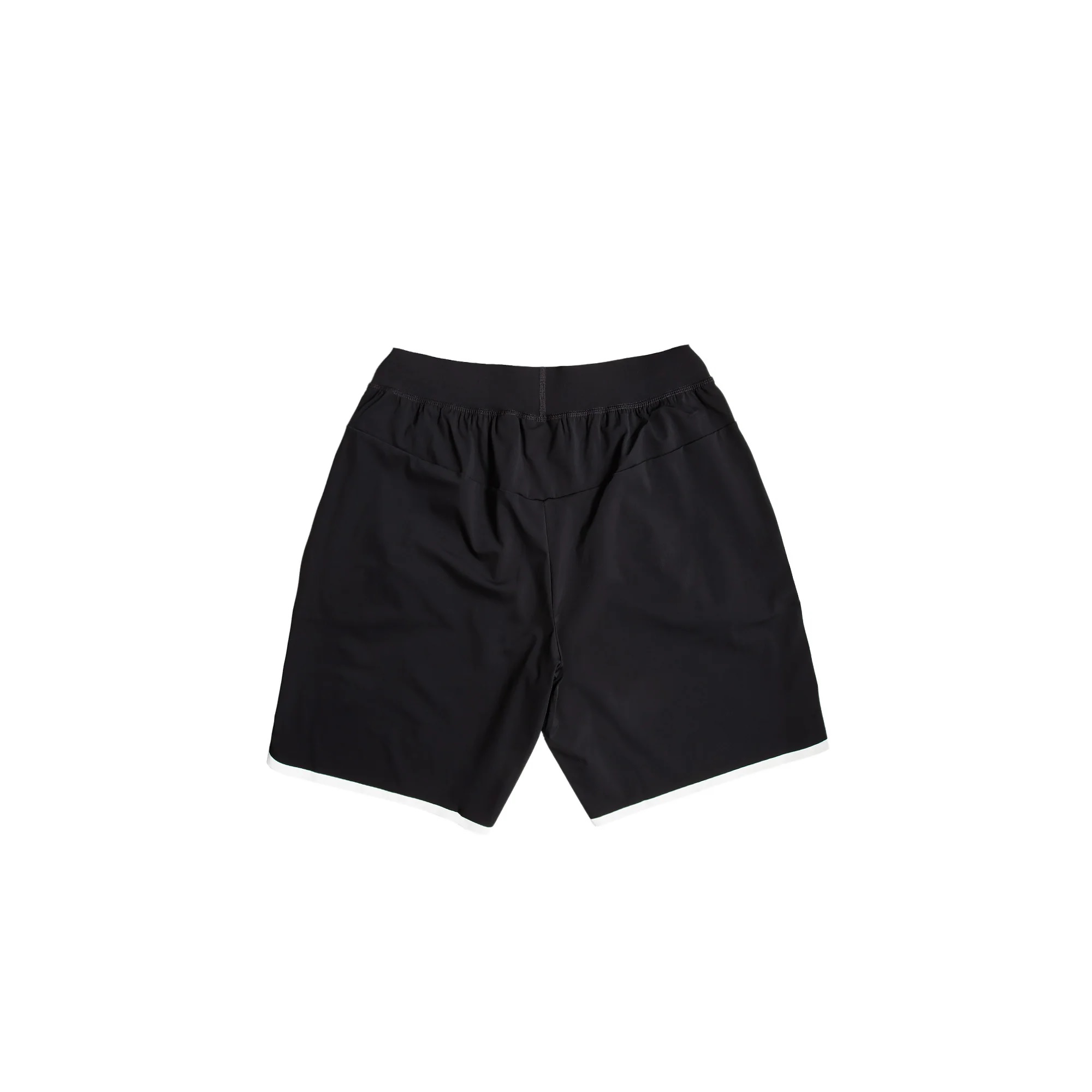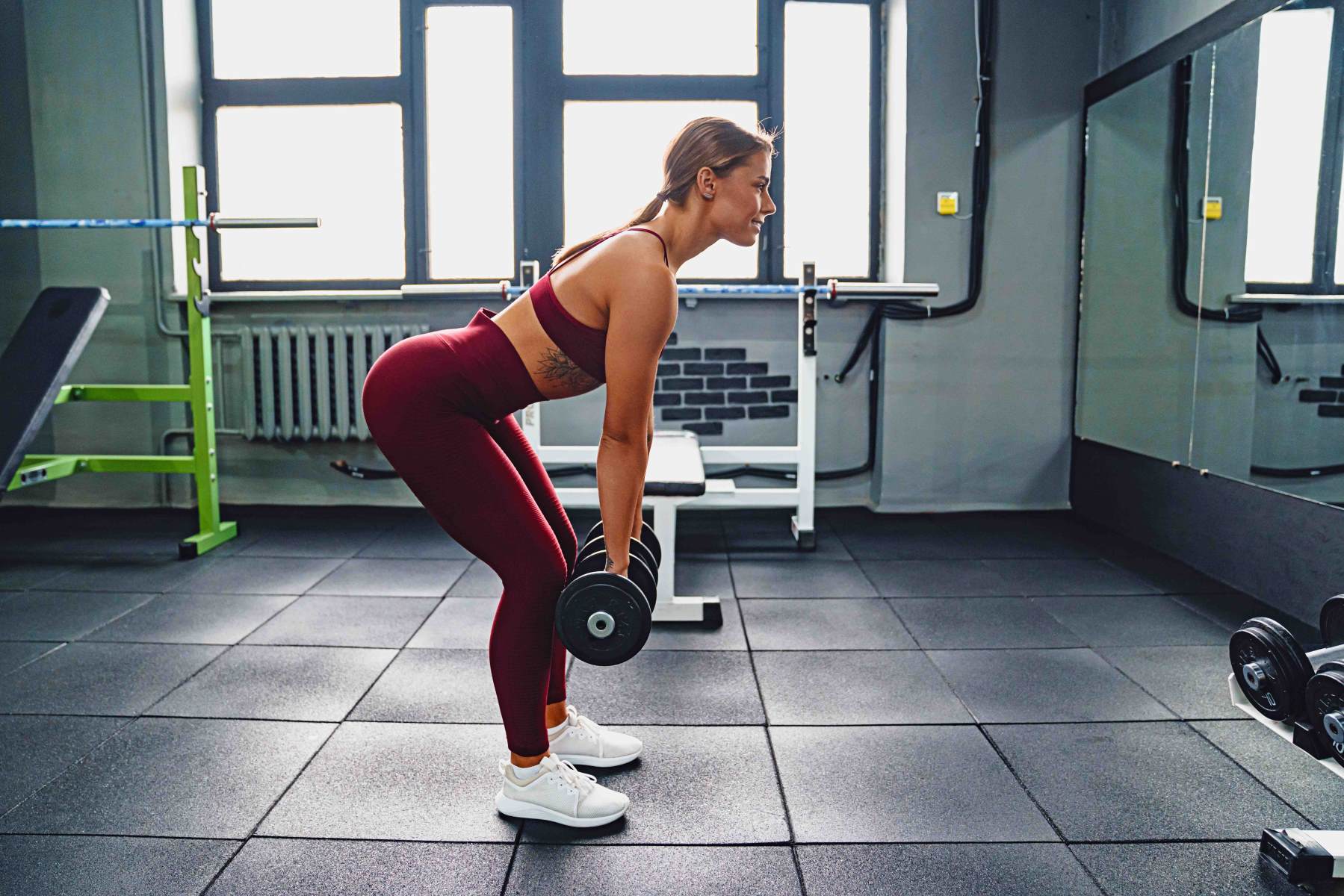

Featured
What Is RDLs Workout
Modified: March 1, 2024
Discover the benefits of RDLs workout, a featured exercise for building strong hamstrings and improving overall lower body strength.
Introduction
Are you looking for a workout that can target multiple muscle groups, improve your strength, and enhance your overall athletic performance? Look no further than the Romanian Deadlifts (RDLs) workout. RDLs are a highly effective exercise that can provide a wide range of benefits for individuals of all fitness levels.
In this article, we will delve into the world of RDLs workout, exploring its definition, benefits, muscles targeted, proper form and technique, variations, who should incorporate it into their fitness routine, safety precautions and tips, and even provide you with a sample RDLs workout routine. By the end of this article, you will have a comprehensive understanding of RDLs and how they can elevate your fitness journey to new heights.
Before we dive into the details, let’s take a moment to understand what exactly RDLs workout entails. RDLs, also known as Romanian Deadlifts, are a variation of the traditional deadlift exercise. Unlike the conventional deadlift, RDLs primarily target the posterior chain muscles, including the hamstrings, glutes, and lower back.
But RDLs don’t just stop there. They also engage the core muscles, the quadriceps, and even the upper back, making it a highly efficient compound exercise that can deliver incredible results. Whether you are an athlete, a fitness enthusiast, or just someone looking to improve your overall strength and muscular development, RDLs can be a game-changer in your workout routine.
Definition of RDLs Workout
RDLs, or Romanian Deadlifts, are a popular strength training exercise that primarily targets the posterior chain muscles, including the hamstrings, glutes, and lower back. The exercise involves bending at the hips while maintaining a slight bend in the knees, maintaining a rigid torso, and lowering the weight along the legs until you feel a stretch in the hamstrings. From there, you drive your hips forward to return to the starting position.
While RDLs might seem similar to conventional deadlifts, there are some key differences. Unlike traditional deadlifts, RDLs focus more on hip hinging, putting a greater emphasis on the posterior chain muscles rather than the quadriceps. Additionally, RDLs typically involve using lighter weights compared to conventional deadlifts, as the focus is on maintaining proper form and maximizing muscle engagement rather than lifting heavy loads.
RDLs are known for their versatility, allowing individuals to perform them using various equipment such as dumbbells, barbells, kettlebells, or even resistance bands. This makes RDLs accessible to individuals with different fitness levels and training preferences.
When performed correctly, RDLs not only strengthen the targeted muscles but also improve hip and hamstring mobility, enhance athletic performance, and help prevent injuries by improving posterior chain strength and stability.
It’s important to note that RDLs require proper form and technique to ensure safety and effectiveness. Engaging the correct muscles, maintaining proper spinal alignment, and controlling the lowering and lifting phases are crucial to maximize the benefits of RDLs.
Now that we have a clear understanding of what RDLs are, let’s explore the various benefits that this workout can offer.
Benefits of RDLs Workout
The RDLs workout offers a myriad of benefits that can improve your overall strength, muscular development, and athletic performance. Let’s take a closer look at some of the key advantages it provides:
- Posterior Chain Development: RDLs primarily target the posterior chain muscles, including the hamstrings, glutes, and lower back. Regularly incorporating RDLs into your training routine can help strengthen and develop these muscles, leading to improved athletic performance and decreased risk of injuries.
- Improved Hip and Hamstring Mobility: RDLs require a deep hip hinge, which helps improve hip and hamstring flexibility and mobility. This can be particularly beneficial for individuals who sit for long periods or have tight hip and hamstring muscles.
- Increased Strength and Power: The controlled eccentric and concentric phases of RDLs help develop strength and power in the posterior chain muscles. This can enhance your performance in activities such as running, jumping, and lifting.
- Enhanced Core Stability: RDLs not only engage the lower body muscles but also require core stabilization to maintain proper form throughout the exercise. This can improve your overall core strength and stability, leading to better posture and decreased risk of back pain.
- Improved Grip Strength: Whether you’re performing RDLs with a barbell, dumbbells, or kettlebells, the exercise requires a strong grip to hold onto the weight. Regularly incorporating RDLs into your training routine can help improve your grip strength and enhance performance in other compound exercises.
- Time Efficiency: RDLs are a compound exercise that targets multiple muscle groups simultaneously. This means you can get a comprehensive full-body workout in a shorter amount of time compared to isolation exercises.
- Injury Prevention: Strengthening the posterior chain muscles through RDLs can help improve overall stability and reduce the risk of injuries, particularly in the lower back, hamstrings, and glutes. It also helps correct muscular imbalances, which can lead to improved posture and reduced risk of overuse injuries.
These are just a few of the many benefits that RDLs workout can offer. Now that we understand the advantages, let’s delve into the specific muscles targeted during RDLs.
Muscles Targeted by RDLs Workout
RDLs are a compound exercise that primarily target the muscles of the posterior chain. Let’s take a closer look at the specific muscles involved:
- Hamstrings: The hamstrings, which consist of the biceps femoris, semitendinosus, and semimembranosus muscles, are the primary muscles targeted during RDLs. These muscles are responsible for hip extension and knee flexion, and they play a crucial role in activities such as running, jumping, and sprinting.
- Glutes: The gluteus maximus, gluteus medius, and gluteus minimus, collectively known as the glutes, are also heavily recruited during RDLs. These muscles are responsible for hip extension and play a vital role in exercises involving lower body strength, stability, and power.
- Erector Spinae: RDLs engage the erector spinae muscles, which run along the length of the spine. These muscles help maintain proper spinal alignment and provide stability during the movement.
- Quadriceps: Although the quadriceps are not the primary focus of RDLs, they still play a supporting role in stabilizing the knee joint during the exercise. This can indirectly contribute to improving quadriceps strength and muscle definition.
- Core Muscles: RDLs require core stability and engagement to maintain proper form throughout the movement. The rectus abdominis, transverse abdominis, obliques, and other core muscles work together to provide stability and prevent excessive spinal flexion or extension.
- Upper Back Muscles: RDLs engage the upper back muscles, such as the rhomboids, trapezius, and rear deltoids, to help maintain proper posture and stability during the movement.
By targeting these muscles, RDLs can help improve overall strength, muscular development, and functional movement patterns. Now that we understand the muscles involved, let’s move on to the proper form and technique of RDLs.
Proper Form and Technique of RDLs Workout
Performing RDLs with proper form and technique is crucial to ensure safety and maximize the benefits of the exercise. Follow these steps to execute RDLs correctly:
- Start by standing with your feet hip-width apart and the barbell, dumbbells, or kettlebells in front of your thighs.
- Engage your core by pulling your belly button towards your spine, and maintain a neutral spine throughout the exercise.
- With a slight bend in your knees, hinge at your hips, maintaining a flat back and allowing your torso to lean forward. Imagine pushing your hips back as if you’re closing a car door with your rear.
- Lower the weight along the front of your thighs, allowing it to pass just below your knees or until you feel a stretch in your hamstrings. Maintain tension in your hamstrings, and avoid rounding your back.
- Push your hips forward, squeeze your glutes, and engage your hamstrings to rise back up to the starting position. Maintain control throughout the movement, focusing on using your posterior chain muscles.
- Throughout the exercise, keep your shoulders pulled back, chest up, and gaze forward to maintain proper spinal alignment.
- Exhale as you lift the weight and inhale as you lower it down.
It’s important to note that maintaining proper form takes precedence over the amount of weight lifted. Start with lighter weights to focus on perfecting your technique, gradually increasing the weight as you become more comfortable and confident.
In addition to the basic RDL technique, there are several variations that you can incorporate into your routine to further challenge your muscles and prevent plateaus. Let’s explore some popular variations of the RDLs workout.
Variations of RDLs Workout
While the traditional RDL exercise is highly effective on its own, incorporating variations can add variety to your training routine and target specific muscle groups in slightly different ways. Here are a few variations of the RDLs workout:
- Single-Leg RDLs: This variation involves performing the RDL exercise on one leg at a time. It enhances balance, stability, and unilateral strength development. Stand on one leg while hinging forward at the hips and extending the other leg straight behind you. Keep your core engaged and maintain proper form throughout the movement.
- Kettlebell RDLs: Instead of using a barbell or dumbbells, this variation utilizes kettlebells. The offset weight distribution challenges your stability and grip strength. Hold a kettlebell in each hand, hinge at the hips, and lower the weights along the front of your thighs, maintaining proper form.
- Sumo RDLs: In this variation, you perform the RDL exercise with a sumo stance, placing your feet wider than shoulder-width apart and toes slightly pointed outward. This targets the inner thigh muscles (adductors) and places a greater emphasis on the glutes. Maintain the same form and technique as the traditional RDLs.
- Deficit RDLs: Deficit RDLs involve standing on a raised platform or step, allowing for a greater range of motion and targeting the hamstrings more effectively. Place the balls of your feet on a step or weight plates and perform the RDL exercise with proper form, focusing on maintaining balance and stability.
- Stiff-Leg RDLs: This variation is similar to the traditional RDL exercise but with a slight difference. Instead of maintaining a slight bend in the knees, stiff-leg RDLs involve keeping the legs straight throughout the movement. This increases the stretch and activation in the hamstrings but also requires greater flexibility and core stability.
These variations can be incorporated into your training routine to add variety, challenge your muscles in different ways, and prevent plateaus. Experiment with different variations to find the ones that work best for you and your fitness goals.
Now that we’ve explored the variations, let’s discuss who can benefit from incorporating RDLs into their fitness routine.
Who Should Incorporate RDLs Workout into Their Fitness Routine
The RDLs workout is suitable for individuals of various fitness levels and goals. Here are a few groups of people who can benefit from incorporating RDLs into their fitness routine:
- Strength Training Enthusiasts: If you’re looking to build overall strength and develop your posterior chain muscles, RDLs are an excellent addition to your strength training routine. They target multiple muscle groups simultaneously, helping you build a solid foundation of strength.
- Sports Performance Athletes: RDLs can enhance your sports performance by improving the strength and power of your posterior chain muscles. Whether you’re a runner, jumper, or participate in sports like football, basketball, or soccer, incorporating RDLs can help improve your explosiveness, speed, and agility.
- Bodybuilders and Fitness Competitors: RDLs are a compound exercise that can help sculpt and define the muscles of the posterior chain, including the hamstrings and glutes. By incorporating RDLs into your training routine, you can enhance the overall muscular development and aesthetic appeal of your physique.
- General Fitness Enthusiasts: If you’re simply looking to improve your overall fitness and functional strength, RDLs can be a valuable addition to your routine. They engage multiple muscle groups, improve core stability, and enhance hip and hamstring mobility, making everyday movements easier and more efficient.
- Sedentary Individuals: Individuals who spend long periods sitting or have poor posture can benefit from incorporating RDLs into their routine. RDLs help strengthen the posterior chain muscles, including those needed for proper posture, and can reduce the risk of lower back pain and injuries caused by prolonged sitting.
Before starting any new exercise program, it’s important to consult with a healthcare professional or a qualified fitness trainer to ensure that RDLs are appropriate for your individual needs and circumstances. They can provide guidance on proper form, technique, and progression to help you get the most out of your workout and prevent injuries.
Now that we’ve discussed who can benefit from RDLs, let’s move on to important safety precautions and tips to keep in mind when performing this exercise.
Safety Precautions and Tips for RDLs Workout
While RDLs can be a highly effective exercise, it’s important to prioritize safety and proper technique. Here are some safety precautions and tips to keep in mind when performing RDLs:
- Start with proper warm-up: Before beginning your RDLs workout, it’s essential to warm up your muscles and increase blood flow to the targeted areas. Perform dynamic stretches, such as leg swings and hip circles, and engage in a light cardiovascular activity to prepare your body for the exercise.
- Choose the appropriate weight: Select a weight that challenges you but still allows you to maintain proper form throughout the exercise. Gradually increase the weight as you become more comfortable and confident with the movement.
- Maintain proper form: Focus on maintaining a neutral spine, engaging your core, and avoiding rounding your back during RDLs. Keep your shoulders pulled back, chest up, and maintain a slight bend in your knees to protect your joints.
- Use a controlled tempo: Perform RDLs with a slow and controlled tempo. Avoid using momentum or excessive swinging to lift the weight. This not only decreases the effectiveness of the exercise but also increases the risk of injury.
- Avoid overextending: While it’s important to engage your glutes and extend your hips during the upward phase of the movement, avoid hyperextending or overextending your lower back. Overextension can place unnecessary stress on the spine and increase the risk of injury.
- Breathe correctly: Inhale at the start of the movement and exhale as you lift the weight, maintaining a consistent breathing pattern throughout the exercise. This helps stabilize your core and increases overall efficiency.
- Listen to your body: Pay attention to any discomfort or pain during the exercise. If you experience sharp or intense pain, stop immediately and consult with a healthcare professional or qualified fitness trainer.
- Progress gradually: As with any exercise, it’s important to progress gradually. Start with lighter weights and focus on perfecting your form before adding more resistance. Gradually increase the weight and intensity as your strength and technique improve.
Remember, everyone’s body is unique, so what works for one person may not work for another. Always listen to your body and modify the exercise as needed. If you have any existing injuries, limitations, or medical conditions, consult with a healthcare professional before performing RDLs.
Now that we have covered the safety precautions and tips, let’s move on to a sample RDLs workout routine that you can incorporate into your fitness regimen.
Sample RDLs Workout Routine
Here’s a sample RDLs workout routine that you can follow to incorporate this exercise into your fitness regimen. Remember to warm up before starting the routine and adjust the weight and sets based on your fitness level and goals:
Warm-up:
- 5-10 minutes of light cardio, such as jogging, cycling, or brisk walking.
- Dynamic stretches targeting the lower body, including leg swings, hip circles, and walking lunges.
RDLs Routine:
- Barbell RDLs:
- 3 sets of 10-12 reps.
- Start with a comfortable weight and focus on maintaining proper form throughout the exercise.
- Rest for 60-90 seconds between sets.
- Kettlebell Sumo RDLs:
- 3 sets of 8-10 reps.
- Stand with your feet wider than shoulder-width apart in a sumo stance.
- Hold a kettlebell in front of your thighs and perform RDLs, focusing on engaging your glutes and hamstrings.
- Rest for 60-90 seconds between sets.
- Dumbbell Single-Leg RDLs:
- 3 sets of 12-15 reps on each leg.
- Hold a dumbbell in one hand and balance on the opposite leg.
- Perform single-leg RDLs, focusing on maintaining balance, stability, and proper form.
- Rest for 60-90 seconds between sets.
Finish the workout routine with stretching exercises targeting the hamstrings, glutes, and lower back to help improve flexibility and reduce muscle tightness.
Make sure to listen to your body and adjust the weight and repetitions as needed. As you progress, consider increasing the weight or adding more sets to continue challenging your muscles.
It’s important to note that this sample workout routine is just a guide. Feel free to modify and customize it based on your preferences, fitness level, and available equipment.
Now that we’ve covered the sample RDLs workout routine, let’s wrap up this article with a quick recap of the benefits and importance of integrating RDLs into your fitness regimen.
Conclusion
The Romanian Deadlifts (RDLs) workout is a highly effective exercise that targets the posterior chain muscles, including the hamstrings, glutes, and lower back. By incorporating RDLs into your fitness routine, you can experience a wide range of benefits, including increased strength, improved hip and hamstring mobility, enhanced core stability, and injury prevention.
When performing RDLs, it’s crucial to prioritize proper form and technique. Maintain a neutral spine, engage your core, and execute the exercise with a controlled tempo. Start with an appropriate weight and gradually progress to challenge your muscles and prevent plateaus.
RDLs are suitable for individuals of various fitness levels and goals, including strength training enthusiasts, sports performance athletes, bodybuilders, and general fitness enthusiasts. However, it’s important to consult with a healthcare professional or qualified fitness trainer before starting any new exercise program, especially if you have existing injuries, limitations, or medical conditions.
Remember to follow safety precautions and tips, such as warming up before your workout, using proper form and technique, and listening to your body. Modify the exercise as needed and progress gradually to ensure that you’re getting the most out of your RDLs routine.
By incorporating RDLs into your fitness regimen and customizing the workout routine to suit your needs, you can enhance your overall strength, improve muscle development and functional movement patterns, and take your fitness journey to new heights.
So why wait? Start incorporating RDLs into your workouts and experience the incredible benefits this exercise has to offer. Get ready to elevate your fitness game and achieve your goals with the power of the Romanian Deadlifts workout!
